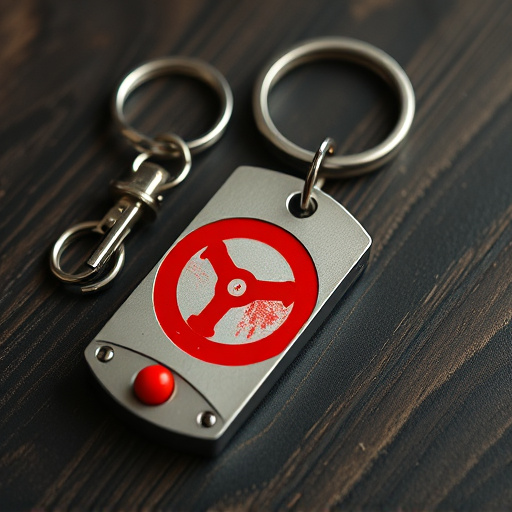Obtaining a keychain weapon permit is crucial for legal self-defense tool carry. Keychain Weapon Permit Requirements vary widely, including eligibility, background checks, and training. Choose tools like flashlights, multi-tools, whistles, or digital alarms tailored to specific emergencies. Research local laws before purchasing, as permits come with unique advantages and constraints. Prioritize safety, meet requirements for secure carrying, and conduct regular functionality checks.
In today’s unpredictable world, being prepared for emergencies is paramount. One often-overlooked tool for personal protection is a keyring with built-in emergency features. This comprehensive guide explores the legal aspects of carrying a keychain weapon permit and delves into essential keyring components for self-defense. We’ll navigate the process of obtaining permits, provide safety tips for responsible carrying, and highlight various tools available, empowering you to make an informed decision about your security.
- Keychain Weapon Permit: Legal Requirements
- Emergency Features: What to Look For
- Self-Defense Tools: Options on a Keyring
- Permits and Licensing: Where to Begin
- Safety Tips: Responsibly Carrying Your Keyring
Keychain Weapon Permit: Legal Requirements
In many jurisdictions, the concept of a keychain weapon permit is a legal requirement for individuals looking to carry self-defense tools on their keys. This small but powerful device can be a game-changer in emergency situations, allowing users to protect themselves discreetly. However, navigating the legal aspects of obtaining such a permit is crucial before considering this option. Each region has its own set of rules and regulations regarding keychain weapons, including specific requirements for eligibility, background checks, and training.
Understanding the local Keychain Weapon Permit Requirements is essential as they vary widely from place to place. These permits are designed to balance an individual’s right to self-defense with public safety concerns. As a responsible citizen, it’s vital to familiarize yourself with these legal mandates to ensure compliance and maximize your personal protection capabilities.
Emergency Features: What to Look For
When considering a personal protection keyring with emergency features, there are several critical aspects to evaluate. Firstly, ensure it includes a robust and easily accessible tool for self-defense, such as a tactical flashlight or a multi-tool with a sharp edge. These tools can serve as both deterrents and means of escape in dangerous situations.
Additionally, look for features that cater to specific emergency needs. This might include a built-in whistle for signaling help, a window-breaker tool for escaping confined spaces, or even a digital alarm designed to startle potential assailants. Remember, the ideal keyring weapon permit requirements vary by location, so check local laws regarding the carriage of self-defense tools to ensure compliance.
Self-Defense Tools: Options on a Keyring
Many modern keyrings now double up as self-defense tools, offering a range of options for personal protection. When considering such a keyring, it’s essential to understand the different features and their permit requirements. Some common keychain weapons include pepper spray, tactical flashlights with stun capabilities, and compact emergency hammers designed to break windows in case of an accident or emergency.
Each option has its own set of advantages and legal considerations. For instance, while pepper spray can be a quick and effective deterrent, it’s subject to specific usage laws and may require a permit in certain areas. Tactical flashlights with stun features offer additional versatility, but their use is governed by local regulations. Understanding the keychain weapon permit requirements for your region is crucial before making a purchase to ensure compliance and peace of mind.
Permits and Licensing: Where to Begin
Personal protection starts with understanding the legal requirements for carrying a keychain weapon, also known as a personal alarm or self-defense device. The first step is to research and familiarize yourself with the keychain weapon permit requirements specific to your location. Different regions have varying laws and regulations regarding these small, easily portable self-defense tools.
Many countries and states require individuals to obtain a special permit or license to carry such devices in public spaces. These permits often come with specific conditions and restrictions, so it’s crucial to check local legislation. You may need to meet certain age criteria, pass a background check, complete training courses, or demonstrate a valid reason for carrying a keychain weapon.
Safety Tips: Responsibly Carrying Your Keyring
When carrying a personal protection keyring, it’s crucial to prioritize safety and adhere to local regulations. In many regions, there are specific keychain weapon permit requirements that must be met. Always ensure your keyring is securely fastened to your keys or bag, avoiding loose hanging which could attract unwanted attention or accidental trips. Choose a discreet yet accessible location on your person to store your protection device, such as a hidden pocket or secure lanyard. Regularly check the functionality of your keyring, testing all mechanisms to guarantee reliability in an emergency situation. Remember, responsible carrying involves being prepared but also mindful of your surroundings and those around you.
In conclusion, equipping yourself with a personal protection keyring can provide peace of mind in unexpected situations. By understanding the legal aspects of a Keychain Weapon Permit and selecting appropriate self-defense tools, you can confidently navigate emergency features. Remember to always follow safety tips for responsible carrying, ensuring your keyring remains a practical and effective defense mechanism. For further guidance on Permits and Licensing, stay informed about local regulations regarding Keychain Weapon Permit Requirements.
